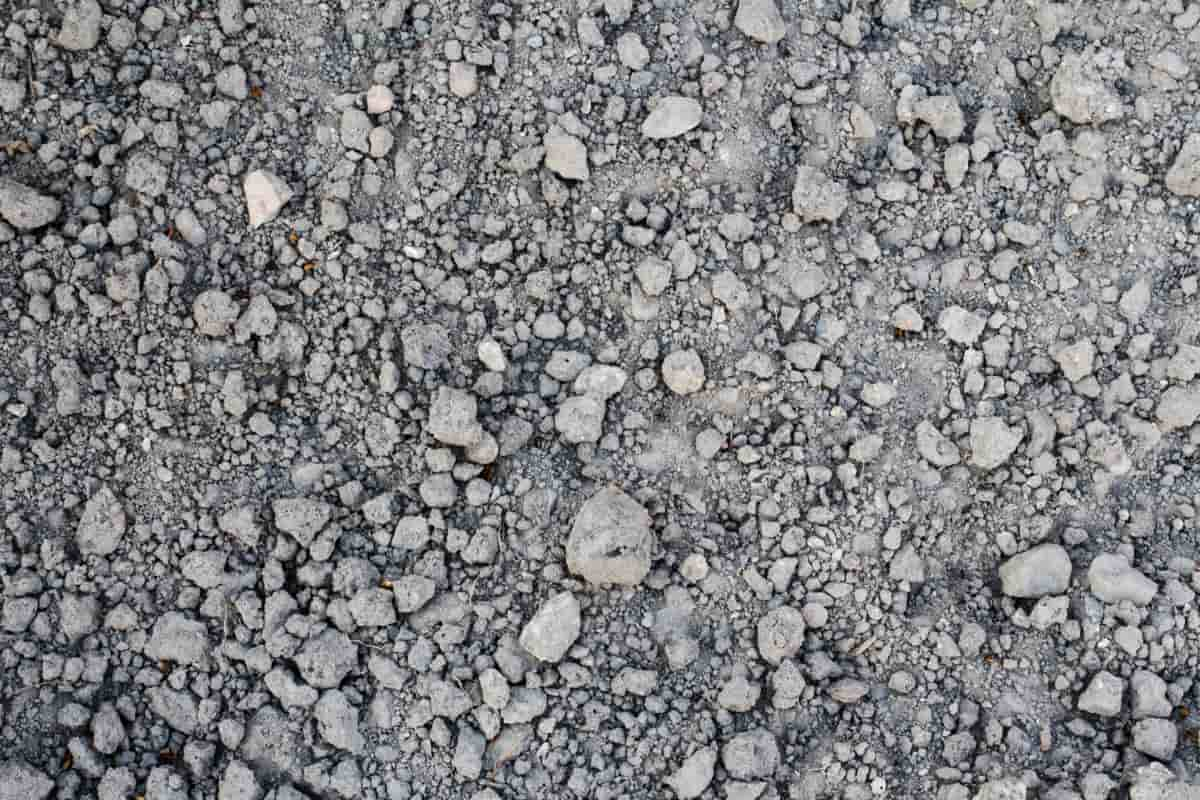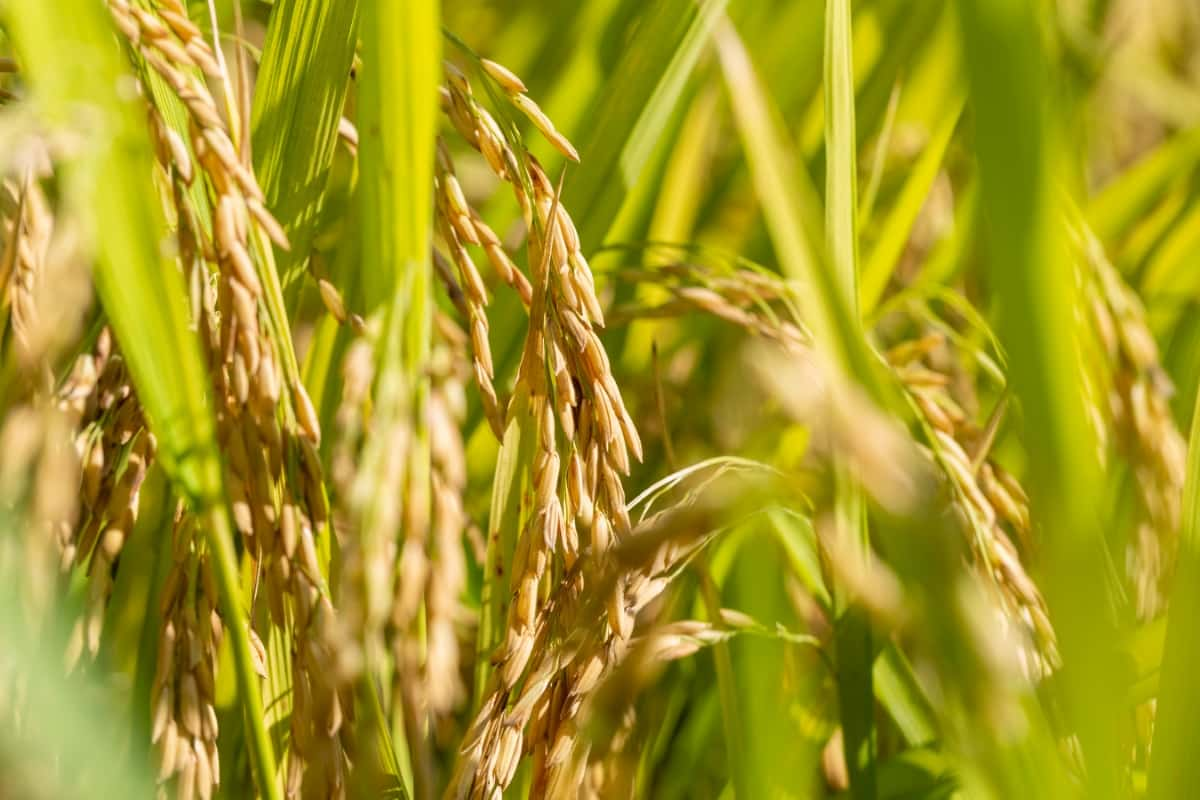Clay soil is characterized by its compacted, thick, and sometimes sticky texture. When clay dirt is dry, it often crumbles into clods; when wet, it sticks to your shoes. Although clay particles bind well with nutrients, they are also so thick that plants cannot extend their roots through them. There is some clay, silt, and sand in all loam soils. When over forty percent of the particles in soil are clay, it can be labeled as clay soil. Heavy clay soil is one in which clay constitutes more than fifty percent of the soil structure in loamy soil.

Best Crops for Clay Soil
Staple Crops for Clay Soil
Many staple crops can grow in clay soil, making them a significant part of our food. It is generally true that these foods produce a substantial amount of food or are dense in calories due to the protein and starch they contain. Examples of staple crops suitable for growing in clay soil are:
| Rice | Sweet potatoes |
| Perennial buckwheat | Taro |
| Plantains and bananas | Daikon radishes |
| Red and green lentils | Cassava |
| Sunflowers | Beans |
In case you missed it: Paddy/Rice Production Guide: A Step-By-Step Cultivation Practices

Vegetable Crops for Clay Soil
Clay soils are usually very nutrient-rich, which makes them ideal for growing vegetables. In general, vegetables require a lot more nutrients than less cultivated plants. Almost every vegetable has a problem when the clay is waterlogged or heavily compacted. These vegetables can tolerate clay soils that are more water-heavy or tighter. Adding organic matter, aerating, and drainage to clay allows you to grow various vegetable varieties. examples of vegetable crops suitable for growing in clay soil are:
| Squash | Peas |
| Cabbage | Water spinach |
| Kale | Artichokes |
| Lettuce | Hostas |
| Broccoli | Mustards (brassicas) |
| Cauliflower | Chives |
In case you missed it: How to Grow Chinese Cabbage: A Step-By-Step Planting Guide

Herbs that Grow in Clay Soil
Many edible and highly nutritious options can be found in fragrant herbs and herbaceous perennials. The plants listed below have deep taproots that help improve clay conditions. They may therefore be ideal pioneer plants before swapping them out for something you haven’t been able to grow successfully. Examples of herbs suitable for growing in clay soil are:
| White clover | Parsley |
| Red clover | Calendula |
| Water mint and cat mint | Sage |
| Dandelion | Bee balm |
| Self-heal | Dill |
| Comfrey | Burdock |
| Yarrow | borage |
| Rosemary | Mullein |
| Lavender |
Berries that Grow in Clay Soil
Growing various berries in clay soil is possible if you amend it. Before planting your berries, it is important to understand how to prepare and amend the soil.Examples of herbs suitable for growing in clay soil are:
| Seabuckthorn | Azarole |
| Raspberries | Juniper |
| Blackberries | Thimbleberries |
| Hawthorn | Cranberries |
- Flowers that Grows in Clay Soil
Many farmers might not prefer clay soil. Many people consider it one of the hardest soils to work with, but it is also one of the most nutritious and moisture-retaining soils. When it comes to farming, it can work wonders for some plants. You can save time by growing plants that thrive in clay instead of having to change the soil or water them constantly. Examples of flowers suitable for growing in clay soil are:
| Hosta | Iris |
| Roses | Black-Eyed Susans |
| Bee Balm | Chinese Lantern |
| Butterfly Bush | Cup Plant |
| Daylily | Sedum |
| Aster | Elder |
| Coneflower | Joe Pye weed |
- Trees and Bushes that Grow in Clay Soil
There is no reason you can’t grow beautiful, food-producing trees if you have clay soil. In clay soil, some species of fruit trees and nuts can thrive. For these trees to thrive, well-drained soil is essential. Clay soil is composed of tiny particles. It is hard for water to pass through these particles, causing the earth to remain saturated for a long time. Compost, wood shavings, or other organic matter can help your soil drain better. Examples of flowers suitable for growing in clay soil are:
| Apples | Pear |
| Star fruit | Pomegranate |
| Elderberry | Pecan |
| Fig | Black walnut |
| Peach | Cherry plum |
Pros of Growing Crops in Clay Soil
As a result of roots having difficulty finding their way through clay soil, clay soil has a bad reputation for being difficult to grow things in. Clay soil, however, does have some advantages, including:
- Drought tolerance: Because clay soil retains so much moisture, it is drought-tolerant. During the dry season, your plants will have plenty of water to draw upon if your soil has adequate clay.
- Good nutrient density: Clay soil particles attract and bind nutrients, such as calcium, magnesium, and potassium, that help plants grow. Natural clay minerals are also beneficial for vegetable gardens.
- Suitability to certain plants: Plants may have difficulty growing in wet clay, but some varieties can thrive in this nutrient-rich and moisture-rich soil. Honeysuckle and ivy or birch and hawthorn trees are some examples.
Cons of Growing Crops in Clay Soil
- Reduced aeration: Soil that is densely packed with clay won’t provide much air for your plants’ roots. Clay soil is detrimental to your goals because most plants need this type of aeration to grow.
- Increased compaction: It is so thick and sticky that dry clay prevents roots from infiltrating throughout the ground. When this type of compaction occurs, it is nearly impossible for plants to grow at all.
- Poor drainage: When soil retains such a high moisture level as clay, it doesn’t drain well. Root rot can occur when your plants receive too much moisture.
Steps for Improving Clay Soil
- Add soil amendments: Adding organic matter or soil conditioning materials to your clay topsoil can increase aeration and reduce compaction.
- Mix organic matter into your garden: You can then combine the organic material with your clay topsoil with a shovel or tiller. As a result, you will have a slightly higher raised bed in your yard, but growing garden plants will be easier and more efficient. Mixing the organic matter into the clay will break up the density, allowing your plants’ root systems to spread out much more easily.
- Plant cover crops: If you want to expand your garden’s biodiversity, consider planting some lush, leafy cover crops that provide the soil with organic matter and leaves. You won’t have to keep manually loosening the soil since these will automatically release microorganisms and plant nutrients.
Conclusion
The benefits of clay go far beyond mud pies. Many plants thrive in it. While it can be dense and heavy, it is also incredibly fertile. Moreover, clay holds water very well, so your plants will never suffer from drought. Clay soil is a good place to grow plants if you choose the right ones.
- Feed Your Flock for Less: Top 10 Tips to Save on Chicken Feed
- Ultimate Guide to Ossabaw Island Hog: Breeding, Raising, Diet, and Care
- Hatching Answers: The Top 10 Reasons Your Chickens Aren’t Laying Eggs
- Eggs and Economics: Breaking Down the Cost of Raising Backyard Chickens
- Defend Your Greens: Proven Methods to Keep Iguanas Out of Your Garden
- Ultimate Guide to Cinnamon Queen Chicken: A Comprehensive Guide for Beginners
- Ultimate Guide to California Tan Chicken: Breeding, Raising, Diet, Egg-Production and Care
- Ultimate Guide to Marsh Daisy Chicken: Breeding, Raising, Diet, and Care
- 10 Types of Chicken Farming Businesses You Can Start for Profits